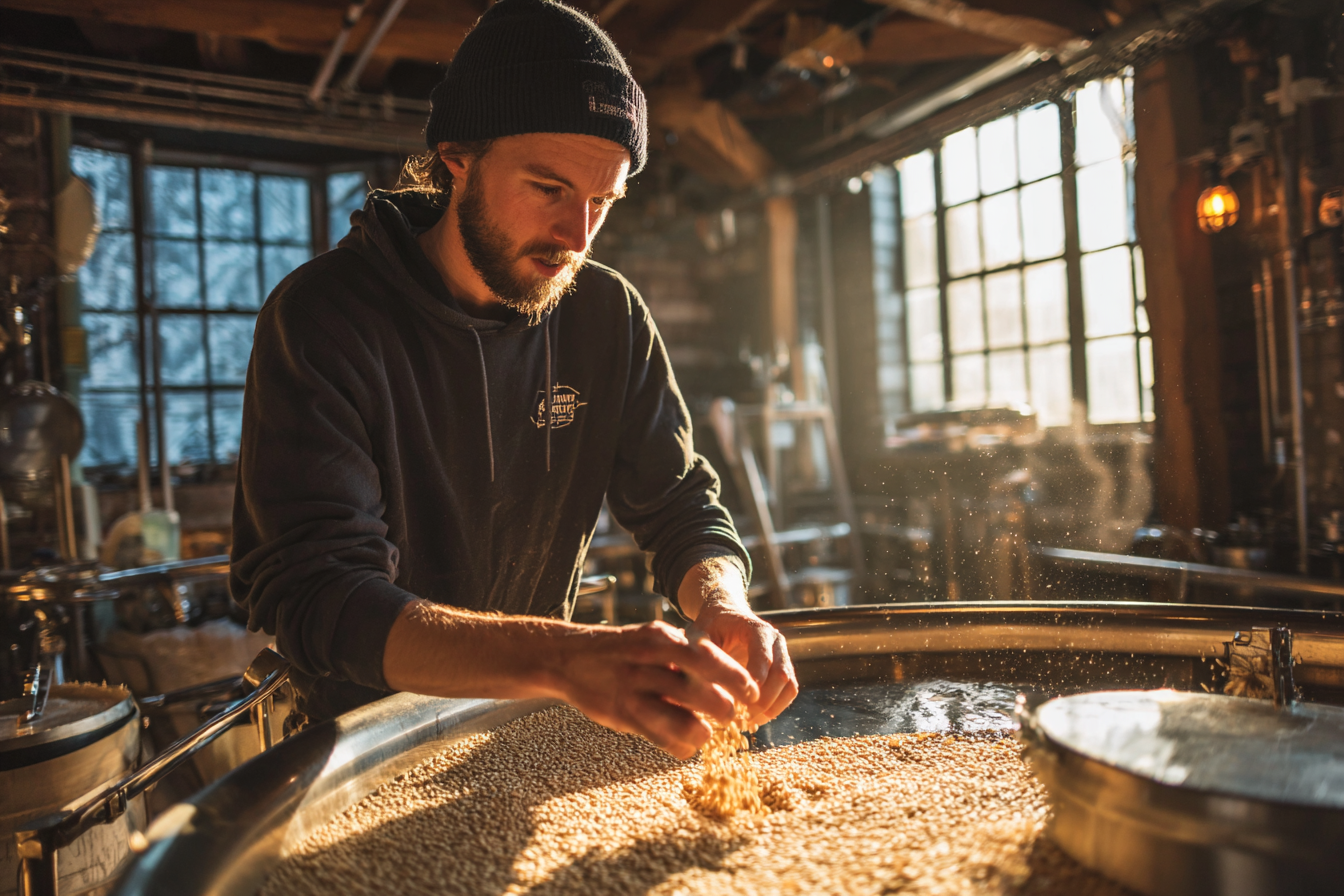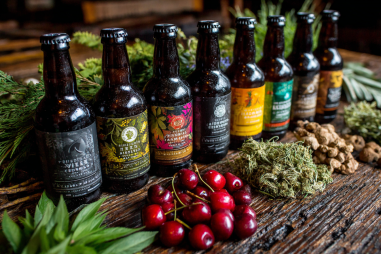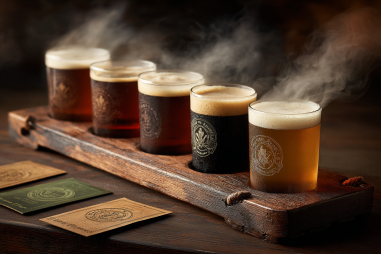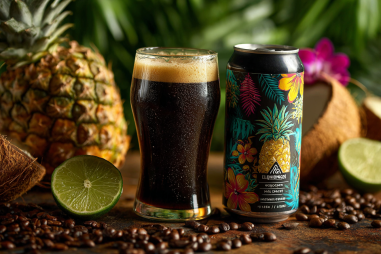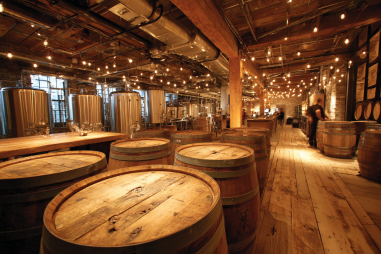If you’ve ever savored the refreshing, slightly cloudy, and crisp taste of an American wheat beer, you might have wondered how it comes to life in a brewery or even in a homebrewing setup. American wheat beer is a popular style known for its smooth mouthfeel, light body, and subtle fruity or spicy notes. If you’re a beginner brewer, this step-by-step guide will walk you through the American wheat beer brewing process—from selecting your grains to pouring the first pint of your homemade brew. Ready to dive into the world of wheat beer? Let’s get started!
Introduction to American Wheat Beer
American wheat beer is a successful twist on traditional wheat beers, often reflecting the influence of German and Belgian styles but with an American hop character. Unlike the heavily spiced or fruity wheat beers from Europe, American versions tend to be crisper and hop-forward, offering a refreshing balance ideal for warm weather. Typically, American wheat beers use a higher percentage of wheat malt—often 40-60%—combined with pale malt, giving the beer a distinct light body, hazy appearance, and that trademark bready or doughy aroma.
This style is perfect for beginners due to its forgiving nature in brewing and flexibility with ingredients.
Essential Ingredients: Wheat Malt, Hops, Yeast
Getting your ingredients right is crucial to brewing an authentic American wheat beer. Let’s break down what you’ll need:
- Wheat Malt: This is the star of the show. Wheat malt adds protein content that contributes to the hazy look and a smooth, creamy mouthfeel. It also delivers slight sweetness and bready flavors.
- Pale Malt (2-Row): Often used alongside wheat malt to provide fermentable sugars and support a balanced malt backbone.
- Hops: American wheat beers typically highlight American hop varieties such as Cascade, Centennial, or Amarillo. These hops add citrusy, piney, or floral aromas and flavors, delivering a mild bitterness that balances the sweetness.
- Yeast: A clean fermenting ale yeast is ideal to preserve the bright hop character and allow subtle fruity esters to develop. Some brewers choose specific wheat beer ale yeasts to add a mild fruity or clove-like character, but it’s optional depending on your taste preferences.
- Water: Use clean, neutral water. Adjusting water chemistry isn’t typically necessary for beginner brewers, but moderately soft water tends to complement wheat beers well.
Mash and Lautering Techniques
Mashing is where your grains get converted into fermentable sugars. Since wheat malt has a higher protein content and less husk than barley malt, it affects the mash consistency and lautering process:
- Mash Temperature: Aim for a mash temperature between 150°F to 154°F (65°C to 68°C) to produce a balanced fermentable sugar profile with some body left behind, resulting in a smooth beer.
- Mash Thickness: Typically, a mash thickness between 1.25 to 1.5 quarts of water per pound of grain works well. The wheat content makes the mash somewhat sticky, so maintain good temperature control to assist enzymatic activity.
- Lautering: Because wheat malt has fewer husks, the mash bed can become compacted during lautering, potentially causing stuck sparges. Use rice hulls—about 5-10% of your grain bill—to help improve lautering flow.
- Sparging: Gently sparge the grain bed with hot water (around 170°F or 77°C) until you collect your pre-boil volume.
Taking time during the mash and lautering stages sets a strong foundation for quality beer later on.
Boiling and Hop Additions
After lautering, the wort is boiled, which sterilizes it and extracts flavors from hops. Here are some tips for the boil phase:
- Boil Duration: A 60-minute boil is standard, ensuring you achieve proper wort concentration and hop utilization.
- Hop Schedule: For American wheat beers, the hop bitterness is moderate. Consider a hop addition at the start of boil for bitterness (e.g., 30-40 IBUs), then add hops late in the boil or at flameout for aroma and flavor.
- Hop Varieties: Cascades are classic, but feel free to experiment with Centennial, Citra, or Amarillo for fruity and citrus character.
- Whirlpool or Dry Hopping: While optional, these techniques can add fresh hop aroma without additional bitterness, enhancing the beer’s bouquet.
Maintaining a vigorous boil helps caramelize some wort sugars and remove unwanted volatiles like DMS (dimethyl sulfide) that can affect flavor.
Fermentation Specifics for Wheat Beers
Fermentation is where the magic unfolds as yeast transforms sugars into alcohol, carbon dioxide, and flavor compounds:
- Yeast Selection: An American ale yeast strain that ferments clean and attenuates well is ideal. For a slight twist, some brewers choose a wheat ale yeast like Wyeast 1010 or White Labs WLP320 for mild fruity esters.
- Fermentation Temperature: Keep fermentation between 65°F and 70°F (18°C to 21°C) for best results. Higher temperatures may generate unwanted esters or fusel alcohols, whereas lower temps could produce a sluggish fermentation.
- Fermentation Duration: Primary fermentation usually takes 1-2 weeks. Monitor gravity with a hydrometer or refractometer to ensure fermentation completion.
- Secondary Fermentation (Optional): Transferring to a secondary vessel can help clarify the beer, although American wheat beers often benefit from some haze and freshness, so it isn’t always necessary.
Conditioning and Carbonation
Conditioning allows flavors to mellow and develop, while carbonation affects mouthfeel and drinkability:
- Conditioning Time: Allow at least 1-2 weeks of conditioning after fermentation ends. This period helps reduce harsh flavors and smooth out the beer.
- Carbonation Level: American wheat beers are best moderately carbonated, around 2.5 to 2.8 volumes of CO2, giving the beer a lively and crisp finish.
- Carbonation Methods: You can naturally carbonate by adding priming sugar before bottling or force carbonate if kegging.
- Cold Crashing: Chilling the beer just before bottling can help sediments settle and produce clearer pours, while keeping some haze is typical for style authenticity.
Bottling and Storage Tips
Bottling your beer properly ensures longevity and quality:
- Sanitation: This cannot be overstated. Everything that comes in contact with your beer must be sanitized to prevent contamination.
- Bottle Conditioning: If using the priming sugar method, evenly mix your measured sugar with the beer before filling bottles.
- Bottle Types: Use standard brown or green glass bottles to protect beer from UV light which can cause “skunking.”
- Temperature: Store bottles at room temperature (68-72°F or 20-22°C) for carbonation and maturation, then refrigerate before serving.
- Patience: Give your beer at least 2 weeks in the bottle to carbonate fully and develop smooth flavors.
Troubleshooting Common Brewing Issues
Beginners may face a few challenges along the way, but don’t worry — they can be overcome:
- Sticky Mash/Stuck Sparge: Add rice hulls to your grain bill in future brews; also stir mash gently before lautering.
- Cloudy Beer: Wheat beers are naturally hazy, but excess haze could be due to inadequate settling, chilling, or filtration.
- Bitter or Harsh Flavors: Boil hops for too long or use overly aggressive yeast; shorten hop boil time or choose cleaner yeast next time.
- Off-Flavors: Caused by poor sanitation, infection, or temperature swings. Maintain cleanliness and stable fermentation temps.
- Low Carbonation: Priming sugar was insufficient; measure carefully next time or try force carbonation.
Keeping detailed notes throughout your process helps you identify issues and improve with each brew.
Enjoying Your Homemade American Wheat Beer
After all the hard work, it’s time to savor your creation. Pour your wheat beer carefully into a glass, leaving the yeast sediment in the bottle if bottle-conditioned. You’ll notice that hazy golden color mixed with inviting aromas of bread, citrus, and hops. The first sip should refresh your palate with its crispness and mild bitterness, followed by subtle fruity or bready notes.
Serve your American wheat beer chilled on a sunny afternoon, paired with light dishes like grilled chicken, salads, or citrusy seafood. And don’t forget to share your brew with friends—it’s one of the most rewarding parts of brewing!
Brewing American wheat beer is not only a fun introduction to homebrewing but also a tasty endeavor that rewards patience and attention to detail. With this guide, you’re well on your way to making delicious wheat beers right at home. Cheers to your brewing journey!

